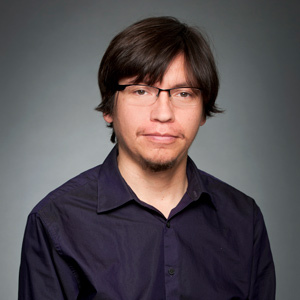
Scientists at the University of Ottawa Heart Institute (UOHI) have cooked up the first human protein gel material capable of repairing damaged heart tissue after a heart attack.
The gel, made from recombinant human collagen in the BioEngineering and Therapeutic Solutions (BEaTS) laboratory of the UOHI, is an “unprecedented leap forward” in addressing repair of cardiac muscle after a heart attack, and has the potential to save millions of dollars in healthcare spending.
This injectable material is the first in the world prepared using human collagen.
- Dr. Emilio Alarcon, Scientist, University of Ottawa Heart Institute
“This injectable material is the first in the world prepared using human collagen,” said Dr. Emilio Alarcon, a scientist in the Division of Cardiac Surgery and Assistant Professor at the Faculty of Medicine of the University of Ottawa.

Drs. Emilio Alarcon and Erik Suuronen are the leading authors of a recently published paper in Nature Communications, a prestigious open access journal that publishes high-quality research from all areas of the natural sciences, which details the results of in-vivo experiments in mice models with the human protein gel. Functional, histological and molecular evaluations were conducted after a series of randomized, blinded trials.
In the paper titled, “Injectable human recombinant collagen matrices limit adverse remodeling and improve cardiac function after myocardial infarction,” the BEaTS team describe how the injection of the rHCI (recombinant human collagen type 1) gel into damaged heart tissue reduces heart wall thickening and scarring and restores the mechanical properties of the damaged heart muscle. Importantly, the gel can also limit the spread of the tissue damage and restore some of the function that was lost.
“As a standalone therapy, we believe the rHCI gel performs better than any cell-based therapies or pharmacological treatment currently available, allowing for easier future translation to the clinic,” said Dr. Alarcon. “The treatment works, in part, by increasing the number of cardiac muscle cells and blood capillaries in the tissue surrounding the damaged area. The gel also promotes the recruitment of more wound healing cells to the site of injury.”
The BEaTS team is hopeful their human collagen gel will one day lead to a recovery of heart function and prevent heart failure in humans, but more testing is required. “This study is the first step towards the development of a biomaterial therapy that is clinically translatable for treating heart attack patients,” said Dr. Alarcon.
“As people with damaged hearts are living longer, the incidence of heart failure is increasing. Therefore, a treatment capable of recovering cardiac function and preventing heart failure would have a tremendous health and societal impact worldwide,” said Dr. Marc Ruel, Division Head of Cardiac Surgery at the UOHI, and one of the authors of the paper published in Nature Communications. “The therapy developed here in Ottawa by the BEaTS team is a promising approach to accomplishing this.”
Dr. Ruel said the University of Ottawa Heart Institute hopes to further develop and apply this treatment in its operating rooms within the next several years. “As a surgeon and researcher, using the laboratory to come up with a solution that helps patients with heart failure truly represents what bench-to-bedside research is all about.”

